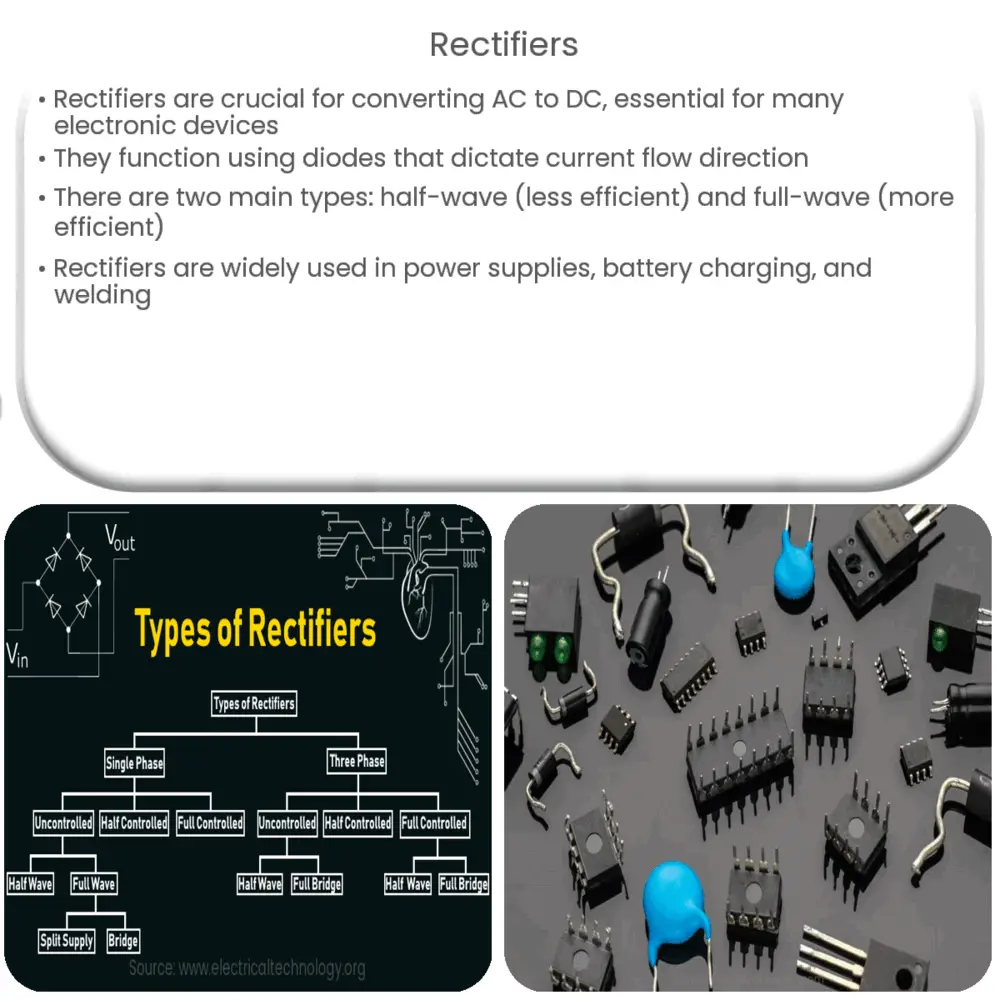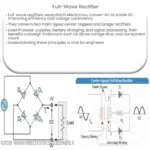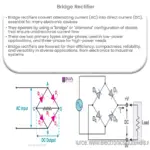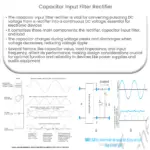Explore the basics of rectifiers, their types, working principles, and applications in electronic devices. Learn how they convert AC to DC.

Introduction to Rectifiers
Rectifiers are fundamental electronic components with a variety of uses. They are critical in the conversion of alternating current (AC) to direct current (DC), a process known as rectification. This article delves into the principles, types, and applications of rectifiers, providing a comprehensive understanding of their role in our technological world.
Understanding the Basic Principle
In essence, a rectifier is a device that ‘rectifies’ or converts an AC signal into a DC signal. AC is an electrical current that periodically reverses direction, while DC flows consistently in one direction. The need for rectification stems from the fact that most electronic devices need DC to function correctly, but power is often supplied in the form of AC.
Types of Rectifiers
There are several types of rectifiers, each with its unique characteristics and applications. They are broadly classified into two: Half-wave rectifiers and Full-wave rectifiers.
- Half-wave Rectifier:
- Full-wave Rectifier:
A half-wave rectifier only allows one half (either positive or negative) of an AC waveform to pass through, effectively eliminating the other half. It is the simplest form of a rectifier but not very efficient as half of the input is lost.
A full-wave rectifier, as the name suggests, allows both positive and negative halves of the AC waveform to pass through, converting the negative half into positive. This results in a more efficient transfer of power.
Working of Rectifiers
The operation of a rectifier is largely dependent on a component called a diode. A diode is a semiconductor device that allows current to flow in only one direction, making it a crucial part of a rectifier. When an AC signal is applied to a rectifier, the diode(s) within it either allow or block the passage of current based on their polarity.
- Half-wave Rectifier:
In a half-wave rectifier, a single diode is used. When the input AC signal is positive, the diode is forward-biased, allowing current to flow. When the signal is negative, the diode is reverse-biased, blocking the current. Hence, only the positive half of the AC signal is output as DC.
- Full-wave Rectifier:
A full-wave rectifier uses two diodes, each connected to a separate half of the AC input signal. When the input AC signal is positive, one diode is forward-biased, allowing current to flow, while the other diode is reverse-biased, blocking current. The process is reversed when the AC signal is negative, allowing the other diode to conduct. This results in both halves of the AC signal being output as DC, but with reversed polarity for the negative half.
Applications of Rectifiers
Rectifiers are used extensively in electronic devices that require a steady and consistent DC supply. Here are a few key applications:
- Power Supplies:
- Battery Charging:
- Welding:
Rectifiers are commonly found in power supplies to convert the mains AC into DC. This is particularly important for electronics like computers, televisions, and radio sets.
Battery chargers use rectifiers to convert AC into DC, which can then be used to charge batteries.
Welding processes require a stable and high DC current, which is provided by rectifiers.
Conclusion
Rectifiers play a critical role in modern electronics by ensuring a stable DC supply. Whether it’s a simple half-wave rectifier or a more efficient full-wave rectifier, these devices are essential for the operation of countless electronic devices. Understanding the function and application of rectifiers provides valuable insight into the design and operation of electronics in our daily lives.




